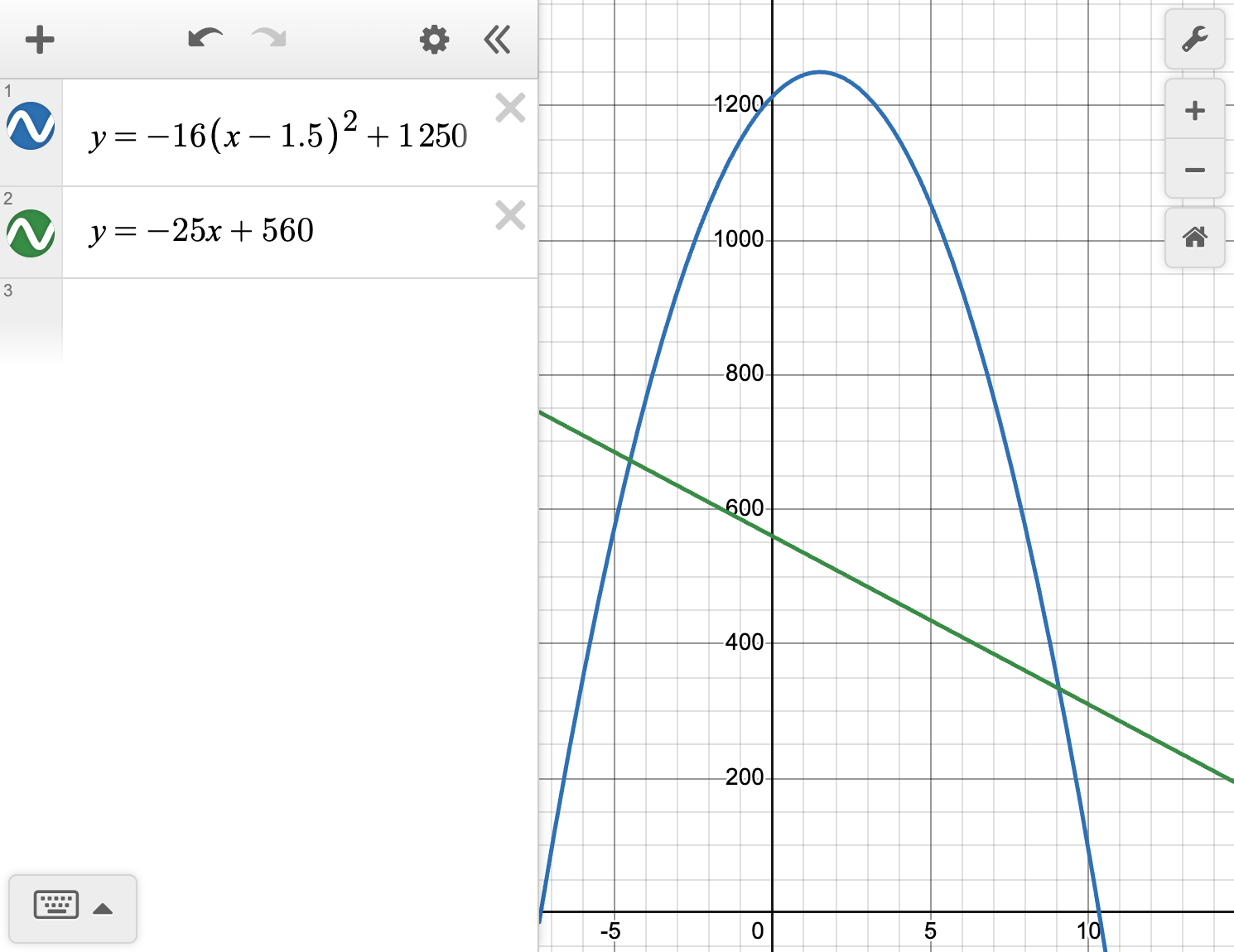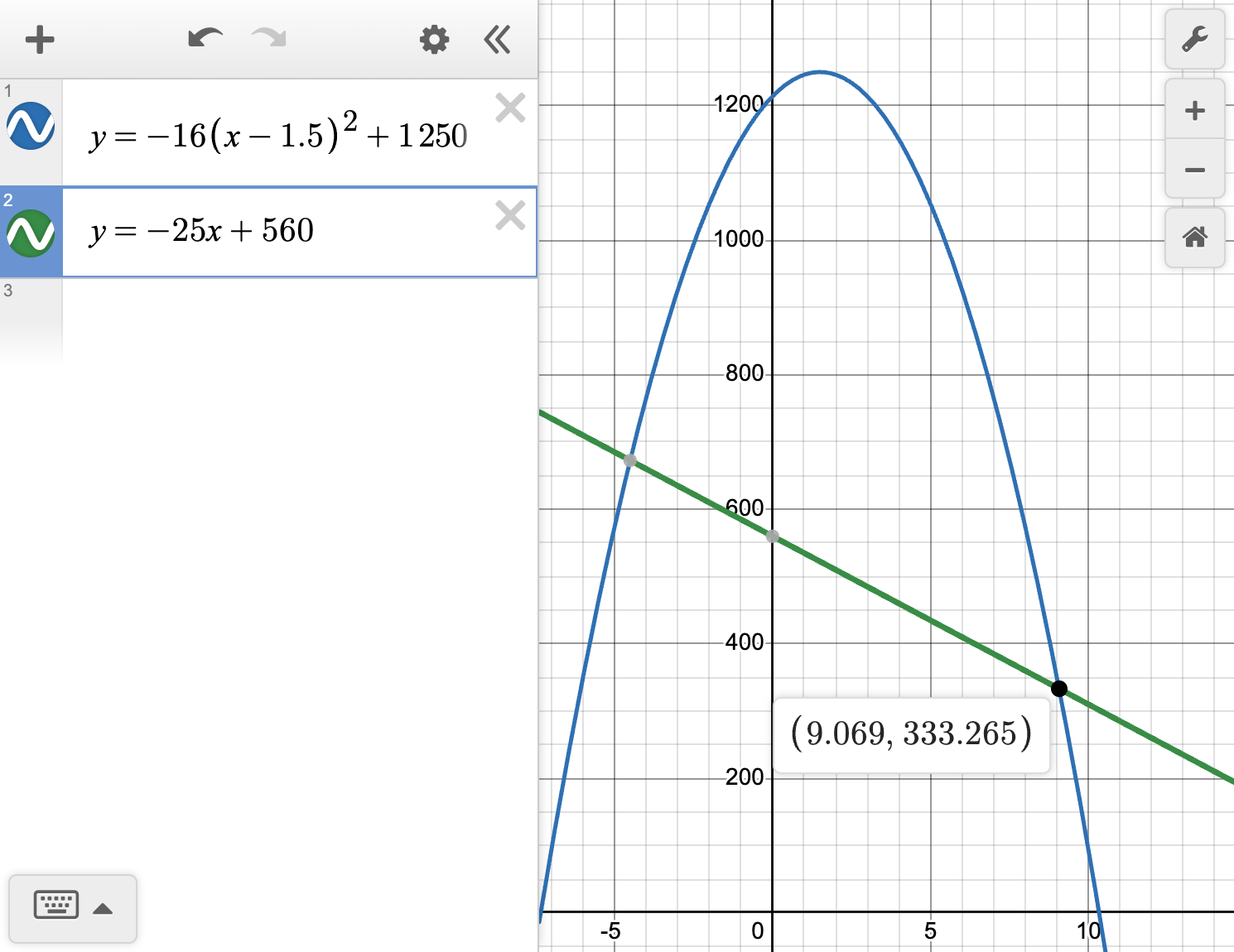2.07 Quadratic systems
Ideas
Quadratic systems
Exploration
Consider the following linear-quadratic system of equations:\begin{cases} y = 2x + 5 \\ y = x^{2} + 3x - 2 \end{cases}
- How could you use the substitution method to solve the system of equations?
- How could you use the elimination method to solve the system of equations?
A system of equations is a set of equations that have the same variables. We can apply the same algebraic methods for solving linear systems to non-linear systems. The goal is to create a one-variable equation so we can solve for that variable and use substitution to solve for the other.
We can go back and forth between representing systems of equations as a system, or as one equation, depending on the solution method we prefer to use. Consider the following equation:
| \displaystyle 2x-3 | \displaystyle = | \displaystyle x^{2}-x+4 |
This can be rewritten as:\begin{cases} y = 2x - 3 \\ y = x^{2} - x +4 \end{cases}
The solution to a system of equations is any ordered pair that makes all of the equations in the system true. For graphs, this will be all points of intersection. Solutions can be found algebraically or graphically.
The solution to a system of equations in a given context is viable if the solution makes sense in the context and is non-viable if it does not make sense.
Examples
Example 1
Consider the following systems of equations:
\begin{cases} y= x^{2} - 2 x - 3 \\ y= - x + 3 \end{cases}
Graph the equations on the same coordinate plane.
Identify the coordinates of the solution(s) to the system of equations.
Example 2
Consider the quadratic-quadratic system of equations:\begin{cases} y=-2x^{2}+4 \\ y=x^{2}-4x+5 \end{cases}
Determine the number of solutions to the system of equations.
Find the solution(s) to the system of equations.
Example 3
Find the solution(s) for the following linear-quadratic system of equations:\begin{cases} y = 3 x + 1 \\ y = x^{2} - 5x \end{cases}
Example 4
A base jumper jumps from the bridge of the Petronas towers, 560 ft high, immediately deploys his parachute, and then descends at a constant rate of 25 \text{ ft/s}.
At the same time, a ball is thrown from the observation deck of the tower, 1214 ft feet high. It follows a path in the form a(x-h)^2+k where a is the force of gravity which is -16 \text{ ft/s}^2 and reaches its maximum of 1250 ft. after 1.5 seconds.
Write a system of equations to model this problem.
Graph the height of the base jumper and ball on the same coordinate plane.
Determine the time the base jumper and ball are at the same height.
A linear-quadratic or quadratic-quadratic system can be solved using the graphing method or substitution method. Using the graph is best when the intersection point(s) are clearly visible. Otherwise, solving the system algebraically or using an intersection tool with technology will lead to a more precise solution.

